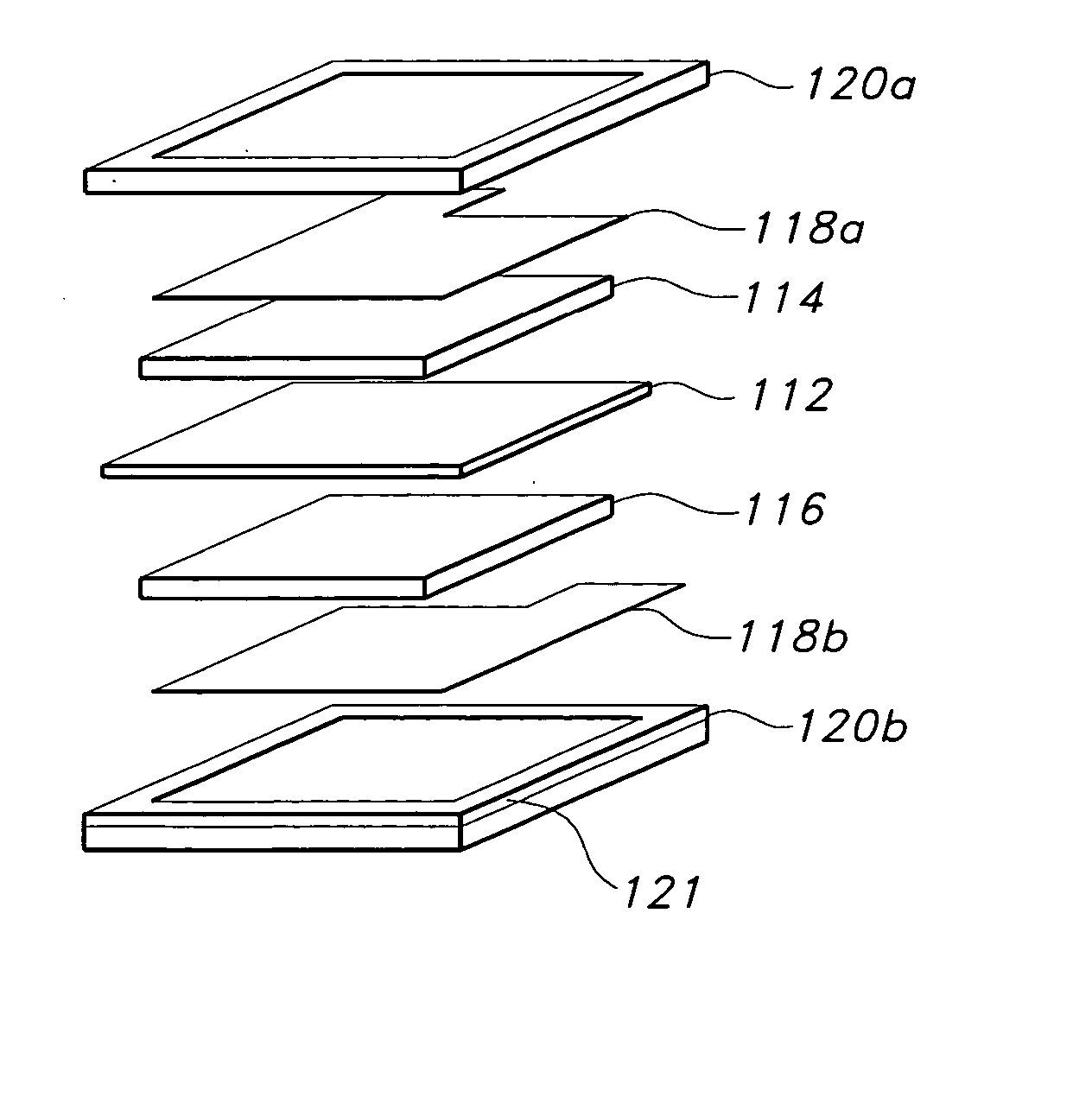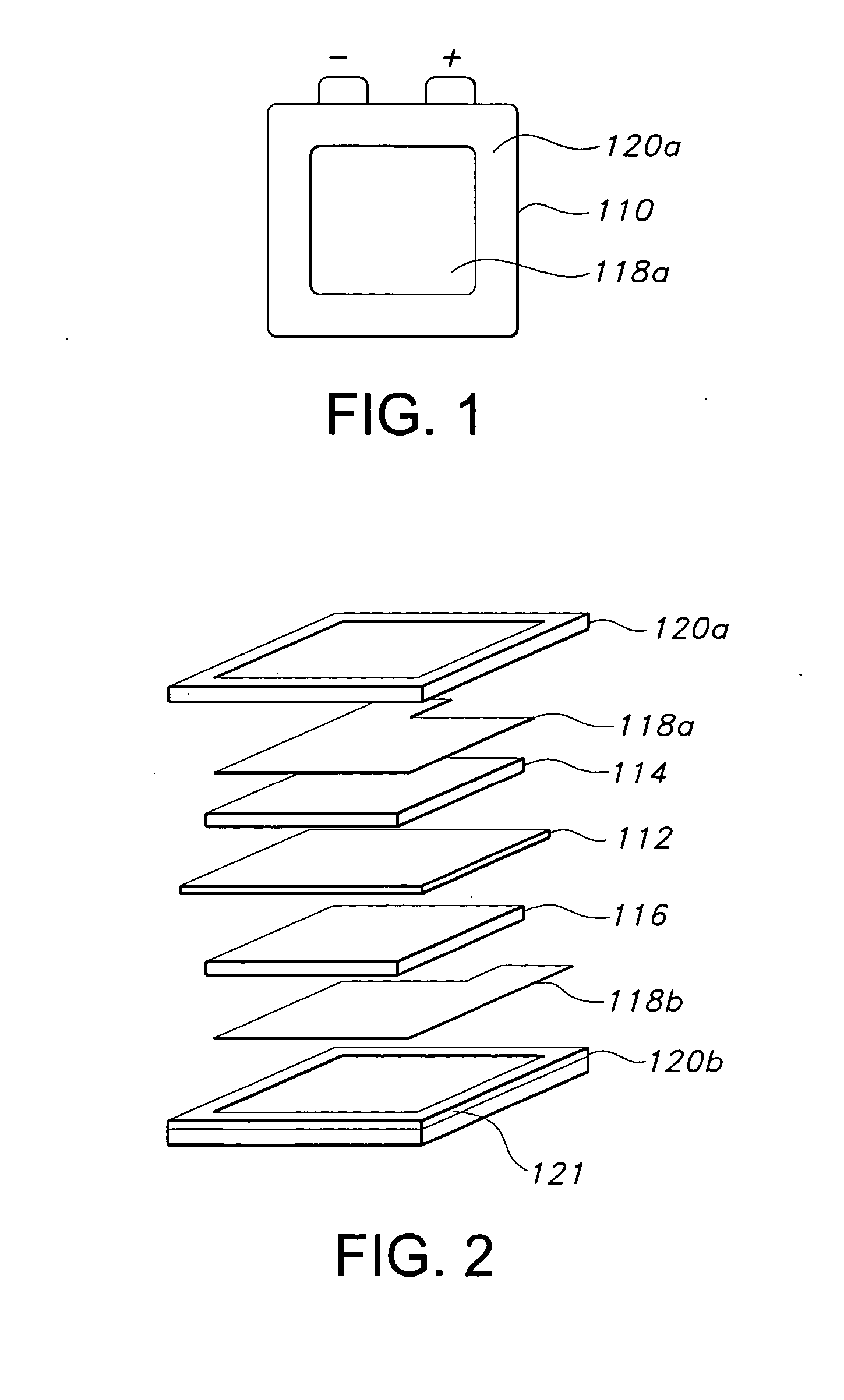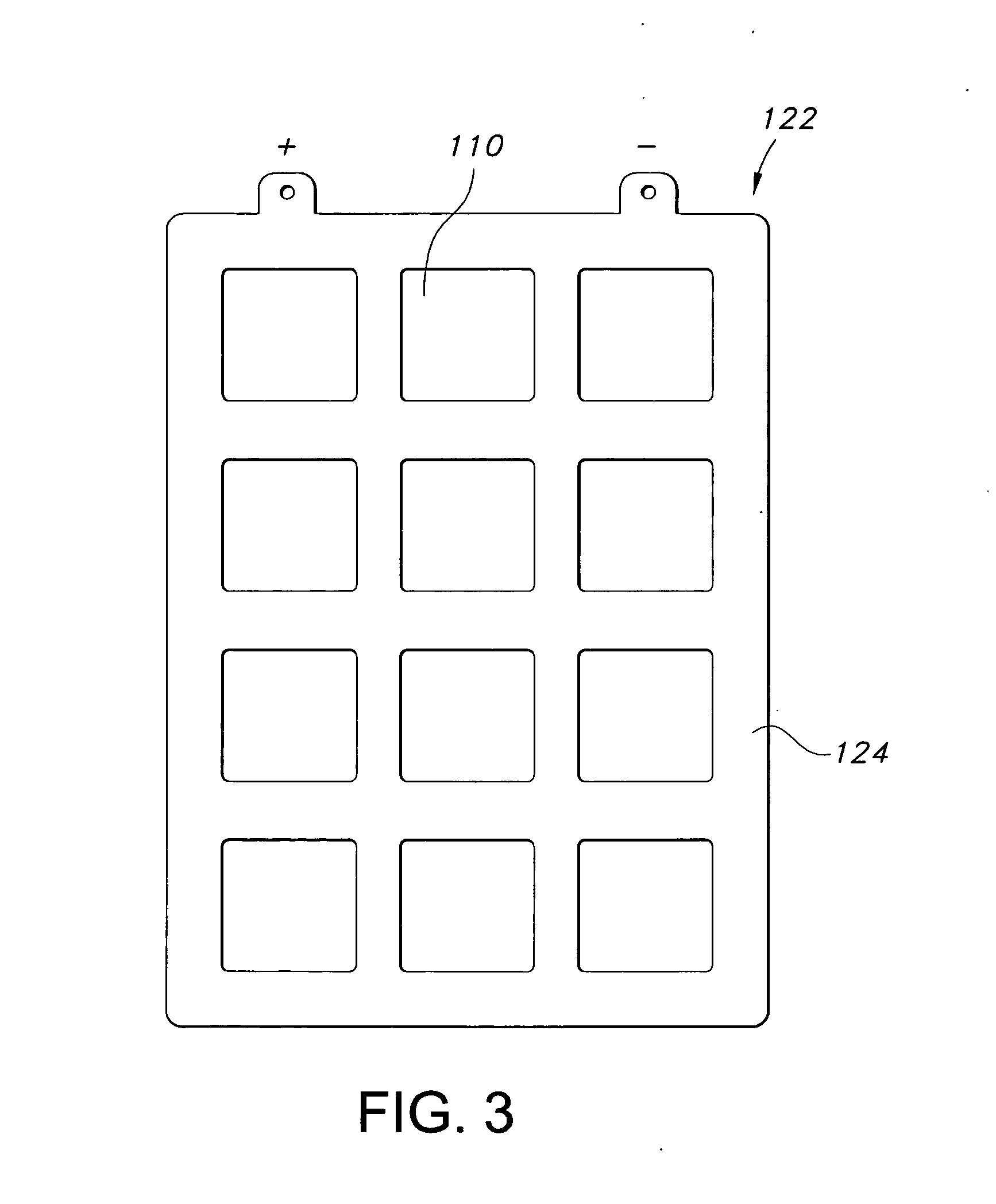Planar fuel cell stack and method of fabrication of the same
a fuel cell and stack technology, applied in the field of air breathing fuel cells and fuel cell stacks, can solve the problems of fuel cell not meeting the requirements of low-power battery replacement applications, requiring various auxiliary components and a complicated control system, and reducing the internal contact resistance of the cell, so as to reduce the delamination effect of the cell
- Summary
- Abstract
- Description
- Claims
- Application Information
AI Technical Summary
Benefits of technology
Problems solved by technology
Method used
Image
Examples
Embodiment Construction
[0044] It is to be understood that the system and method of the present invention may be advantageously employed without the incorporation of each of the features disclosed herein. It is to be further understood that modifications and variations may be utilized without departure from the spirit and scope of this inventive system and method, as those skilled in the art will readily understand. Such modifications and variations are considered to be within the purview and scope of the appended claims and their equivalents.
[0045] Single Cell Fabrication
[0046] As shown in FIGS. 1 and 2, a single cell 110 constructed in accordance with the present invention includes a membrane 112 disposed in between an anode 114 and a cathode 116. The opposing side of anode 114 is adjacent a metal mesh current collector 118a and the opposing side of cathode 116 is adjacent a metal mesh current collector 118b. Preferably, anode 114 and cathode 116 comprise catalyst and / or backing layers and GDLs, which ...
PUM
| Property | Measurement | Unit |
|---|---|---|
| Temperature | aaaaa | aaaaa |
| Fraction | aaaaa | aaaaa |
| Fraction | aaaaa | aaaaa |
Abstract
Description
Claims
Application Information
 Login to View More
Login to View More - R&D
- Intellectual Property
- Life Sciences
- Materials
- Tech Scout
- Unparalleled Data Quality
- Higher Quality Content
- 60% Fewer Hallucinations
Browse by: Latest US Patents, China's latest patents, Technical Efficacy Thesaurus, Application Domain, Technology Topic, Popular Technical Reports.
© 2025 PatSnap. All rights reserved.Legal|Privacy policy|Modern Slavery Act Transparency Statement|Sitemap|About US| Contact US: help@patsnap.com



